Welcome to our Pressure Canning Guide for Beginners! When you preserve your harvest or farmers’ market haul through canning, you maintain the flavor of garden-fresh food at its peak—to store and savor all-year long. Here is our step-by-step guide on how to use a pressure canner safely—and which foods can and cannot be pressure canned. Let’s get started!
Advertisement
What is Pressure Canning?
Pressure canning (not to be confused with pressure cooking!) uses special equipment to process food at a higher temperature to prevent spoilage. It is necessary to use pressure canning to preserve “low acid” vegetables and foods. (“High acid” foods such a pickling cucumbers and tomatoes and berries and fruit can simply be preserved with water-bath canning.) We’ll talk more about this in a moment.
You do need to invest in a canner (many are about $100), but you can use the same pot for water-bath preserving, too. While it may seem intimidating, it’s like most things. Once you’ve done it a couple times, it’s no more difficult than regular canning. That said, if you’ve never tried canning, we usually recommend to first try water-bath canning to make jam or pickles or tomato sauce.
Pressure canning is definitely a “project” but worthwhile for those who have an abundance of fruit and vegetables from the garden or farmers’ market. Why try canning?
- Maybe you’ve inherited your mother’s pressure canner and three shelves of glass canning jars? Or, you inherited some canning equipment or bought it at a garage sale?
- Perhaps you doubled the size of your vegetable garden this year? Or, you increased your community-supported agriculture (CSA) share to include bulk purchases?
- Or, you’re ready to move beyond quick refrigerator jams and pickles to preserve the bounty for a full year!
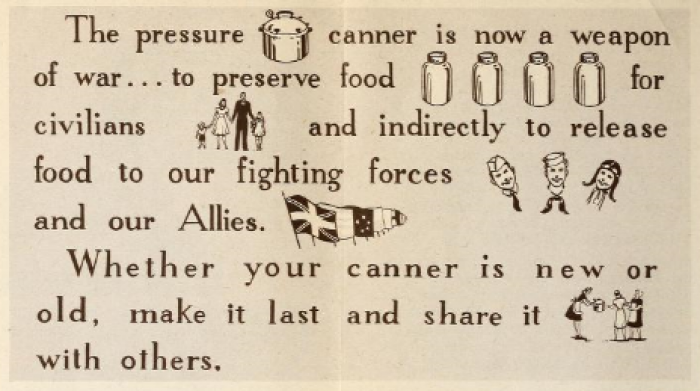 The importance of pressure canning! From “Take Care of Pressure Canners”, USDA, 1945.
The importance of pressure canning! From “Take Care of Pressure Canners”, USDA, 1945.
Which Food Needs to Be Pressure Canned
The acidity, (pH) of foods determines how they must be processed for canning. We don’t expect you go know your food’s pH! But the amount of acid is all it comes down to. Acid foods such as berries and pickles with a pH of 4.6 or lower may be canned in a water bath canner. Low-acid foods such as vegetables and meats with a pH above 4.6 must be processed in a pressure canner.
Why? Pressure canning is the only safe way to preserve “low-acid” foods to eliminate the harmful bacteria Clostridium botulinum—the cause of a deadly illness, botulism. Foods include low-acid vegetables, chicken, meats, seafood, soups, stock, and stews—all easy to preserve. Specifically:
- Vegetables that are low-acid include: Artichokes, asparagus, green beans, lima beans, carrots, corn, mushrooms, okra, onions, peas, potatoes, pumpkin and winter squash.
- Fruits that are low-acid include: Cantaloupe and watermelon. (All other fruit is high-acid including berries and cherries, grapes, nectarines, oranges, peaches, and plums.)
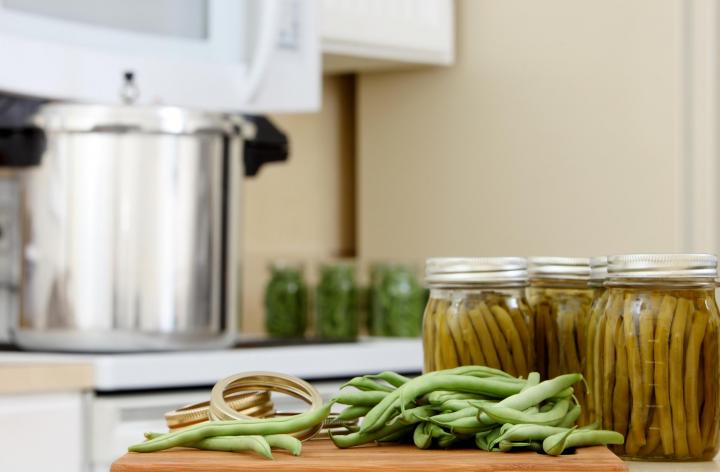 Image: Preserving green beans! Credit: B Brown/Shutterstock
Image: Preserving green beans! Credit: B Brown/Shutterstock
But grandma did it this way …
Many of our grandmas (including our own) only used a water-bath canner in which jars sat covered with boiling water. This method is still fine for “high-acid” foods, including most tomato products, jams, jellies, and vinegar pickles, because the acids in these products prevent the growth of harmful bacteria in the sealed jars. See how to water-bath can.
However, many of our great-grandmas also canned low-acid products like corn, beans, and chicken the water-bath way, letting the kettle boil away for 2 or 3 hours. But by the late 1920s, scientists had identified strains of the C. botulinum bacteria whose spores could survive hours of boiling. This is why low-acid foods are best when canned in a pressure cooker, where trapped steam increases the pressure inside the cooker and raises the temperature to 240°F (116°C) for an established processing time, well above the boiling temperature of 212°F (100°C).
For more, take a look at the fascinating history of USDA home canning recommendations.
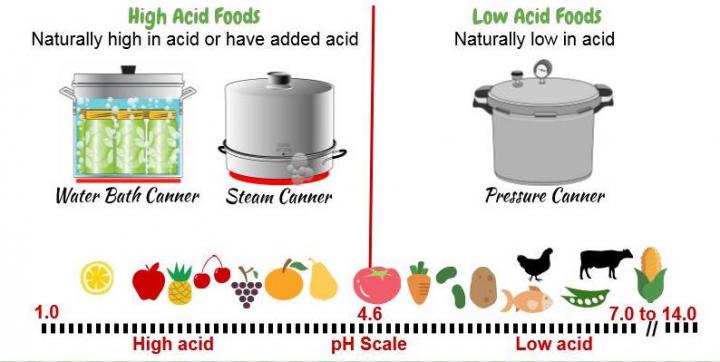 Credit: https://www.rrc.k-state.edu/
Credit: https://www.rrc.k-state.edu/
What to Love About Pressure Canning
- You can preserve a wide variety of homegrown or locally produced vegetables, poultry, meats, and even seafood.
- You can take advantage of good buys on bulk produce, meats, or chicken.
- You can stock your shelves with home-canned convenience foods: beans, lentils, chickpeas, chicken, chilis, soups, broths, and squash or pumpkin for pies.
- Your canned products will not spoil during extended power outages or a freezer malfunction.
- Modern glass canning jars will last many years if properly cared for, so by saving your jars for reuse, you will lighten your trash load.
- Bragging rights. There’s nothing quite like showing off those pantry shelves groaning with dozens, maybe hundreds, of jars of home-canned goodies.
Pressure Canning Supplies
What supplies do you need to get started? Here are the tools of the trade:
- You need a pressure canner (NOT a pressure cooker). A pressure canner may cost $100 to $500, depending on size and quality.
- Note: The U.S. Department of Agriculture recommends using caution when canning in electric pressure cookers or regular pressure cookers, and does not recommend canning in small pressure cookers or using cooking times that are meant for pressure canners.
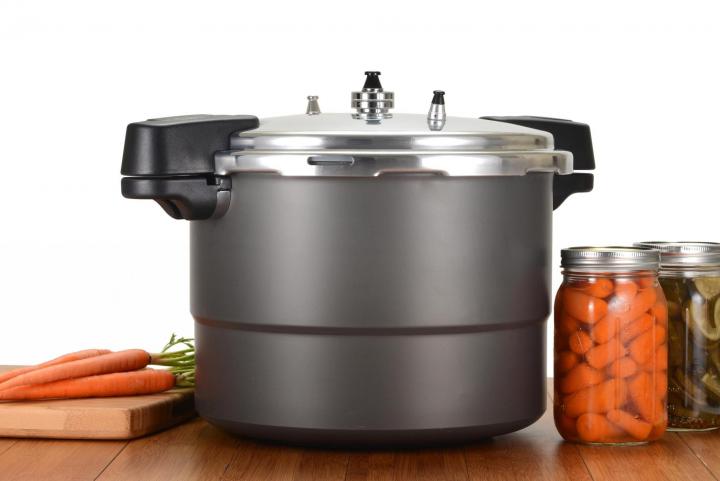
- You need canning jars, bands, and lids: Quart-size jars cost around $1 each, and single-use lids are about $3 to $4 a dozen. While you can reuse canning jars and bands, you must not reuse lids; pick up a new pack.
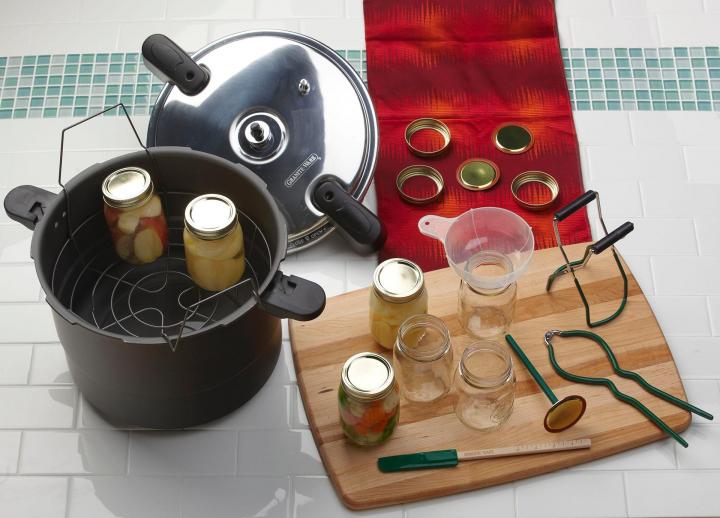
- It helps to have some canning accessories: ladle, wide-mouth canning funnel, jar lifter, lots of clean kitchen towels, and potholders. Also helpful: a digital timer and a magnetic lid-lifter.
- You need a traditional stove with coil heating units or a gas stove. A smooth-top stove may not be safe or practical. Check with your stove manufacturer whether your model will support boiling water bath canning or pressure canning.
- You need time. Preparation, processing, and cooling down a single canner full of jars (4 to 20 quarts) may take 3 to 4 hours or more. When you have a bounty of fresh vegetables, meat, or poultry that’s ready to process, you will need to preserve it immediately for maximum flavor and nutritional value.
- You need countertops and cutting boards for preparing the food; setting up your clean, empty jars; and allow your jars of finished products to cool overnight.
- You need shelf space for storing your canned food.
A Canner’s Caveat
I’ve canned for decades, enjoy it, and recommend it. It brings great pleasure, but it’s a knowledge-based practice. You can’t really learn on the fly; it’s not like making a batch of blackberry jam or freezing a big bag of green beans. Ideally, you should do your research and collect your supplies in the year before you actually begin.
The bottom line: You probably don’t want to invest in the equipment and time involved with low-acid canning unless you plan to process a lot of food each year.
9 Tips For Preparing Delicious Canned Foods
- Familiarize yourself with all the instructions that came with your pressure canner. If you do not have them, find the manufacturer’s instructions for that model online or contact the manufacturer for help.
- If your canner has a dial gauge, have it checked every year to ensure its accuracy. To find out where to get it tested, check your state or county’s Cooperative Extension website or call your local Extension office. Or contact your canner manufacturer directly.
- Plan to use new or relatively new Mason-style jars in sizes appropriate for your product. Save old-fashioned jars with wire bails and glass lids, ornamental glass storage jars, or recycled pickle and peanut butter jars for other things.
- Wash your jars in the dishwasher but process your canned goods only on a stovetop. It is absolutely not safe to can anything in a dishwasher, oven, or microwave.
- Do not alter the proportions of ingredients and do not add thickeners or other ingredients not specified in the tested recipe that you are using.
- Follow the instructions for filling the jars; leave just the right amount of headspace and resist the temptation to overfill to get that last little bit into the jar. The specified head space allows room for the food inside to expand while heated and not interfere with the lid’s seal, creating a strong vacuum as the jar cools down.
- Abide by the recommended times for venting and cooling the canner. Waiting the full time is essential to ensure both the safety of your finished product and your physical safety (e.g., from steam burns).
- For best flavor and nutritional value, eat what you’ve preserved within a year or so.
- Can only the foods that you know you and your family will eat and enjoy—and you will enjoy the experience from beginning to last bite!
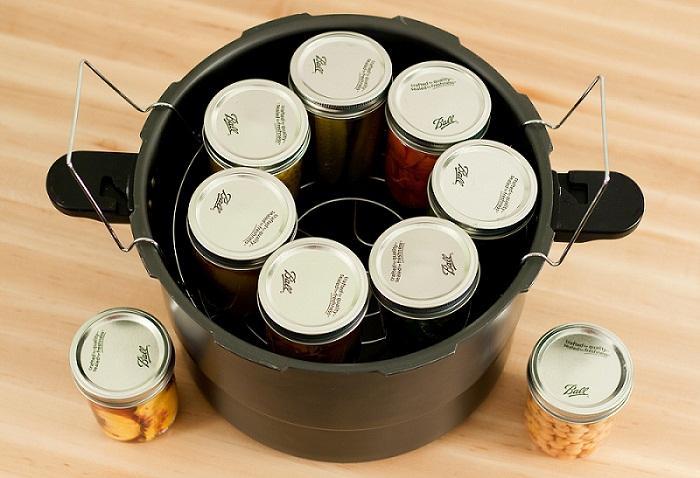
Pressure Canning: Step-by-Step Guide
Before you get started, prepare your low-acid preserving recipe. Here are safe pressure canning recipes!
- Gather materials. Ensure all canning jars are clean by washing in hot, soapy water and rinsing well and air drying. Make sure all jars, lids, and bands fit properly. There shouldn’t be any nicks or cracks on the jar’s rim.
- Pre-heat jars. Place jars in a large pot with enough hot water to cover the jars with water. Add lid. Bring water to a simmer (180°F) for 10 minutes.
- Set-up your pressure canner with the rack and 2-3 inches of water brought to a simmer and kept simmering until ready to fill with jars.
- The lids sold today do not need to be placed in simmering hot water to activate the sealing compound before placing on the jars.
- Follow one of our low-acid, pressure-canning recipes when preparing your produce. Fill each jar with the prepared food and liquid needed, using a ladle and funnel.
- Release any trapped air bubbles using a rubber spatula or a plastic canning wand between the jar and food to release trapped air. Leave appropriate headspace (1/4”, ½”, or 1” per recipe directions).
- Wipe rims of jars with a clean, damp cloth and remove any food residue.
- Put the lid on each jar, apply the screw band and tightened only finger tight. Using the jar lifter, put the jars on the rack in the pressure canner with 2 – 3 inches of simmering water. Don’t allow the jars to touch each other.
- Process the jars: Lock the canner lid in place, leaving vent pipe open. Adjust heat to medium-high to get steam flowing through the vent pipe. Allow steam to escape through vent pipe for 10 minutes or until steam forms a constant flow to ensure there is no air (only steam) left in the canner. Close vent using weight or method described for your canner. Monitor and adjust heat to achieve the recommended pressure.
- Maintain the recommended pressure for the time indicated in the recipe, adjusting for altitude (see altitude chart). Turn off heat. Let canner stand undisturbed (do not remove the weighted gauge) until pressure returns to zero. Wait 10 minutes, remove weight and unlock the lid, tilting away from yourself. Allow jars to cool for an additional 10 minutes.
- Remove jars from the pressure canner using a jar lifter and set upright on a towel. Leave jars undisturbed for 12 to 24 hours.
- Remove the screw bands and inspect lids for seals. There should be no flex when you gently press the center of each lid. If the lid flexes, gently try lifting the lid at the rim with your nail. Properly sealed lids will remain attached. If a lid fails to seal within 24 hours, immediately refrigerate the product.
Want to try other types of preserving? See the easier method, water-bath canning, for canning tomatoes and jams.
More Canning Information
Safe, successful canning requires comprehensive, easy-to-follow recipes, informed by the latest scientific research and updated as new research becomes available. Consider these your trusted resources and follow their recommendations and tested recipes to the letter:
- Start with the U.S. Department of Agriculture’s Home Canning Guides. Read Guide 1: Principles of Home Canning thoroughly. See the useful glossary beginning on page 33. Guide 4 and Guide 5 contain information and recipes for preserving low-acid vegetables, poultry, meats, and seafoods.
- The National Center for Home Food Preservation offers everything you need to know about canning low-acid foods. Each link expands to reveal a wealth of information.
- Cooperative Extension Service offices in each state offer home-canning information in a variety of formats: guidebooks and fact sheets, telephone hotlines, how-to videos, and in-person classes. Check your closest Extension office to find what they offer near you. Some state Extension programs offer Master Food Preserver training for personal mastery of safe home preservation skills and training as volunteers for judging at county fairs, state fairs, providing information on how to safely preserve at health fairs, and community gardens.
- The Ball Corporation website has a wonderful section on low-acid pressure canning, including a useful troubleshooting (problem-solving) chart.
- Booklets that you can order and then put on a kitchen shelf to consult while working include the USDA Complete Guide to Home Canning, the Ball Blue Book Guide to Preserving (37th edition), and the University of Georgia’s So Easy to Preserve (this one also comes in a video version).
What’s your favorite food to can? Let us know in the comments below!
This Canning Guide was updated and fact-checked as of July 2020, by Christina Ferroli, PhD, RDN, FAND. If interested in nutrition counseling and education practice to make healthier choices—or, simply stay up-to-date on the latest food, nutrition, and health topics—visit Christina’s Facebook page here.

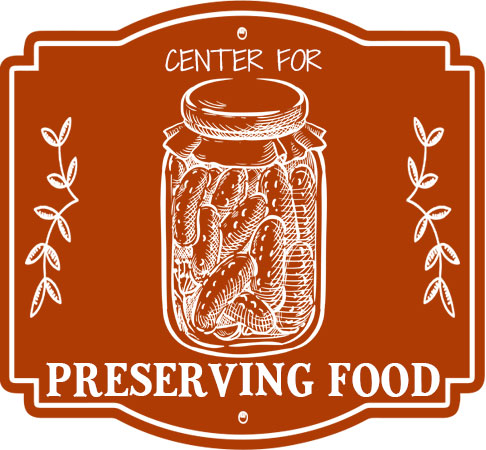

 The importance of pressure canning! From “Take Care of Pressure Canners”,
The importance of pressure canning! From “Take Care of Pressure Canners”,  Image: Preserving green beans! Credit: B Brown/Shutterstock
Image: Preserving green beans! Credit: B Brown/Shutterstock Credit: https://www.rrc.k-state.edu/
Credit: https://www.rrc.k-state.edu/ 










Comments